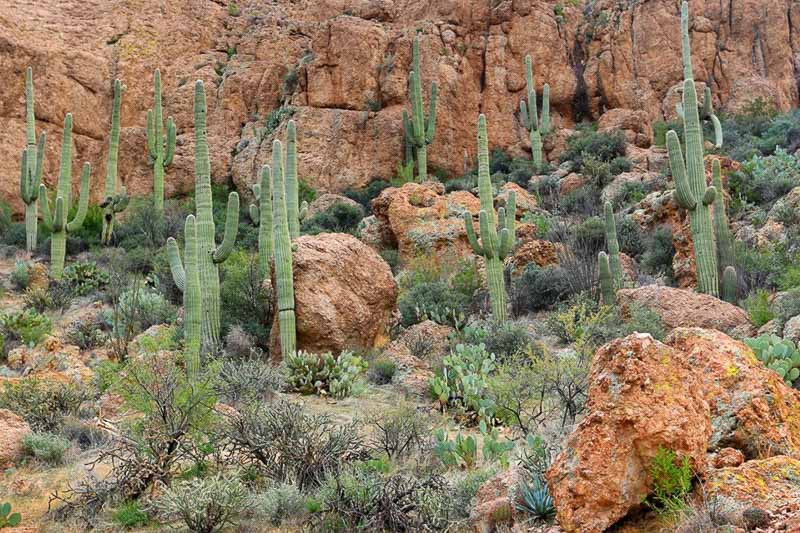Saguaro Cactus: Iconic Symbol of the American Southwest
The Saguaro cactus, an emblematic symbol of the American Southwest, particularly the Sonoran Desert, stands as one of the most recognizable cacti in the world.
Description and Characteristics: Saguaros are notable for their towering, columnar structure, often adorned with branching arms that reach skyward. These arms may start to grow after 75 years. Mature Saguaros can reach heights of 50 feet (15 meters), making them the largest cactus species in the United States.
Habitat: Native to the Sonoran Desert, Saguaros are adapted to hot, dry climates. They are found in southern Arizona, parts of California, and Mexico.
Flowering and Fruiting: The Saguaro flowers in late spring to early summer, producing large, white, nocturnal flowers that close by the next midday. The flowers are pollinated by bats, birds, and bees, leading to the production of sweet, red fruits. These fruits are an important food source for desert wildlife and were traditionally harvested by indigenous peoples.
Ecological Role: Saguaros serve as crucial habitats for desert wildlife. Birds like Gila Woodpeckers and Purple Martins often nest in holes within the cactus. They also play a significant role in the desert ecosystem as a water storage unit, providing moisture for other organisms.
Cultural Significance: The Saguaro holds cultural and spiritual significance for the Native American tribes of the Sonoran Desert. It is a popular icon in art, photography, and media, symbolizing the beauty and harshness of the desert.
Conservation: Saguaros are protected under U.S. law. Their slow growth and long lifespan, often exceeding 150 years, make them vulnerable to environmental changes and human activities.

